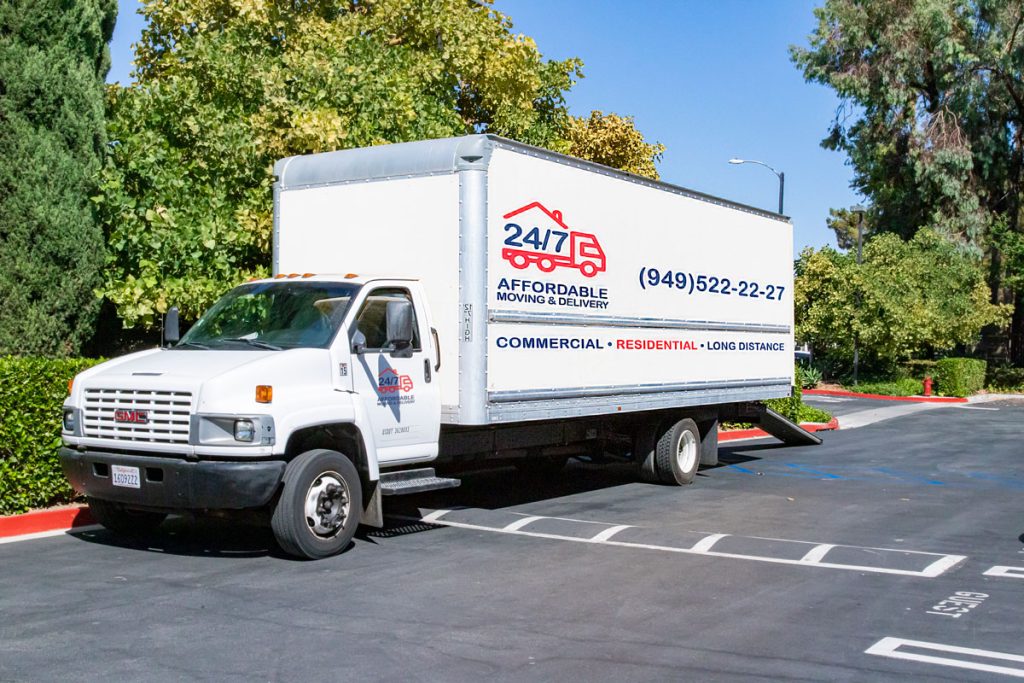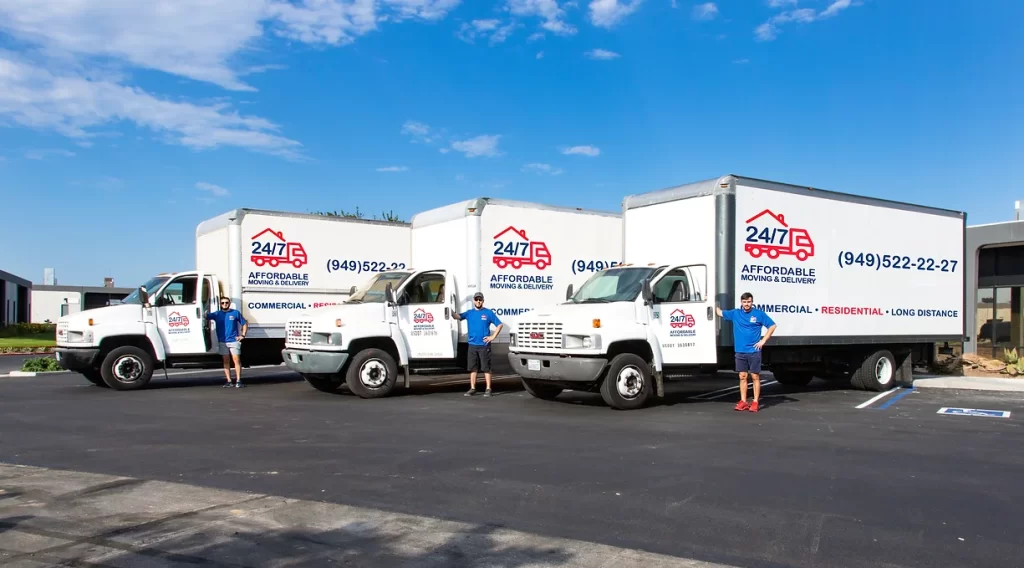The Pros and Cons of Different Transportation Options for Local Moves

If you’re planning a local move and cannot decide on a transportation option to choose, we’ve prepared the pros and cons of different options to help you select the best one for your needs.
Traditional moving trucks
A traditional moving truck is one of the common moving options that comes to mind when transport is needed for local or interstate relocation. It’s almost an unspoken rule — when you’re moving, you get a truck. But like anything else, using a traditional moving truck has its pros and cons. The advantages of this transport include:
- Flexibility. You can rent a truck, load up your belongings, and drive to your new place at your own pace. You’re not tied to a moving company’s schedule, which can be a godsend if you’re juggling multiple responsibilities.
- Cost-effectiveness. Compared to full-service moving companies, renting a moving truck can be much more cost-effective. You’re essentially cutting out the labor costs and paying only for the rental and fuel.
- Variety of sizes. Moving trucks are available in a variety of sizes — suitable for all your needs, whether you’re moving from a studio apartment or a four-bedroom house.
However, traditional moving trucks have some drawbacks as well:
- Driving challenges. If you’re not used to driving large vehicles, maneuvering a moving truck can be difficult. They’re larger, heavier, and require more stopping distance than regular cars. Parking can also be tricky, especially in crowded cities or areas with limited space.
- Fuel costs. While renting a moving truck can be cost-effective, the fuel costs can add up, especially for long-distance moves. Trucks aren’t known for their fuel efficiency, so this is something to consider when budgeting for your move.
- Physical effort. Unless you hire help, you’ll be doing all the heavy lifting yourself. This physical effort can be strenuous and time-consuming, and there’s also the risk of injury if you’re not careful.
It’s important to weigh these pros and cons before deciding if a moving truck is the best option for your move. Or maybe think about containerized moving options.
Containerized moving options
Containerized moving options, like PODs, have risen in popularity recently. This method involves using portable storage containers that are delivered to your home, filled up, and then shipped to your new location. But is this the right choice for your move? Let’s first consider the advantages of such a transport option:
- Convenience. The company drops off the container at your home, you load it up at your leisure, and then they pick it up and deliver it to your new home. You don’t have to pack, load, and transport everything in one day.
- Flexibility. You can keep the container for as long as you need — especially helpful if there’s a gap between your move-out and move-in dates.
- Storage solution. If you need temporary storage during your move, a moving container can kill two birds with one stone. Your items can stay safely packed in the container until you’re ready to unpack them.
The cons of this method include:
- Limited availability. Containerized moving options may not be available in your area. While many large cities offer this service, it can be harder to find in rural areas.
- Cost. You save on labor costs but renting a moving container can still be quite expensive, especially for long-distance moves.
- Space limitations. Containers can hold a lot but you might run into space issues. If you underestimate your belongings, you may end up needing another container.
- Potential for damage. Your items are generally safe in a container, but there’s always a risk of damage during transit. To reduce this risk, you should ensure you pack your belongings securely.
Weighing all these pros and cons will help you make the right choice of options for local moving. However, there is another factor to consider — logistics of transportation modes.
Logistics of transportation modes
Different modes of transport require different logistics types. Understanding them will help you select the best possible option.
As for traditional moving trucks, they require a hands-on approach. After choosing the appropriate truck size for your belongings, you’ll need to schedule a pickup and drop-off date. On a moving day, you (and any helpers you’ve enlisted) will load the truck with your packed belongings.
Once loaded, you or a designated driver will drive the truck to your new location. For local moves, this is usually completed in one day. However, you may need to plan for overnight stops and consider factors like fuel costs and driving fatigue if you’re moving for a long distance.
Returning the truck is also part of the process. Most rental companies require the vehicle to be returned with a full tank of gas and in the same condition it was rented. Failure to meet these conditions can result in additional charges.
Containerized moving options offer a different set of logistics. Once you’ve selected a provider and determined the right container size, the company will deliver this mode of transport to your current home. You then can pack and load the container at your own pace.
Once the container is packed, the company collects it and transports it to your new location. If there’s a gap between your move-out and move-in dates, the company can store the container at a secure facility.
Upon arrival at your new home, you can again take your time to unpack the container. Once it’s empty, the company will come to pick it up. This option reduces the need for driving a large vehicle but requires a proper plan to ensure the container is available when you need it.
However, if you cannot choose between these two transportation modes in terms of logistics, you can hire a professional moving company to help you with your local move.

Specialized moving companies
Despite these two methods having their benefits, hiring a professional moving company like Affordable Move means handing over all the heavy lifting to seasoned experts. Our experienced team will do everything, from packing up your belongings to transporting them safely to your new home. Sure, this might cost a bit more than other options, but think about the convenience and extra time it brings. You won’t have to lift a finger or worry about the logistics — we’ve got it all under control.
When deciding on a moving option, it’s important to look at the whole picture. Consider all the costs you might incur, whether it’s renting a truck, paying for professional movers, or covering the expenses of a moving container. Make sure you weigh these costs against the value of your time and effort.
Comparative cost analysis
What about the cost of different transportation methods, there are many factors to consider. For example, renting a truck can be a budget-friendly choice as the average cost of a local move using a rental truck can range anywhere from $150 to $2000+ depending on the size of your home and the distance between your old and new home. However, you’ll have to handle everything yourself — from packing to driving the truck.
Containerized moving options are a bit more expensive. The average cost of a local move using a moving container can range from $400 to $4500. However, while you pack and load the container, you don’t have to worry about driving a large truck as the company transports the container for you.
Finally, hiring a professional moving company like Affordable Move might be more expensive than the other two options, but our movers will do all the heavy work for you. To get an estimate of our services, you can request a quote directly from our website.
Storage options in transit
Sometimes, the dates of moving just don’t line up and you’ve got to move out of your old place before you can move into your new one. Storage in transit, or SIT, may help here. It involves temporarily storing your belongings in the moving company’s storage facilities until they can be delivered to your new home. The common options include self-storage units and portable storage containers.
What about self-storage units, they act as your belongings’ temporary apartments. You get to decide how long they stay, and you can visit anytime you like. The downside is that you’re responsible for moving your items to and from the unit, and this will be an extra expense on top of your moving costs.
Then there are portable storage containers. They’re convenient because the container is delivered to your location, and you can pack at your own speed. These containers can also tag along with you to your new location. The catch? Once your stuff is inside and the container is picked up, it’s locked away until it reaches its final destination. And yes, this convenience means a slightly higher price tag than self-storage units.
If you’re already hiring a moving company, it might make sense just to have them take care of the storage too. They’ll keep your belongings safe in their facility. But, similar to the portable storage containers, you can’t pop in to grab something you’ve stored away. Plus, this will be an extra charge on top of your moving costs.
Choosing the best option among these really depends on your personal situation — your budget, how quickly you need to move, and how much stuff you have. If you’re considering a moving company like 24/7 Affordable Moving & Delivery Inc., don’t hesitate to reach out to us directly and get a professional assessment.

